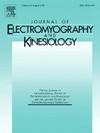男性和女性的运动表现和衰老
IF 2.3
4区 医学
Q3 NEUROSCIENCES
引用次数: 0
摘要
老年化伴随着男性和女性运动能力的显著下降,包括肢体肌肉的力量、速度和力量的下降,这种下降早在中年(40岁)就开始了,从65岁开始加速。在动态收缩任务中,肢体肌肉的老化和更大的表现变异性(老年人之间和老年人内部),特别是老年女性,会增加疲劳,从而加剧肌肉力量和力量的低下。从中年开始,与同龄男性相比,女性在肌肉力量、力量和运动表现方面表现出更早、更大的与年龄相关的下降,与此同时,健康状况不佳、身体虚弱和丧失独立性的情况也越来越普遍。这篇综述提供了影响运动单元的关键神经和肌肉机制的证据,在健康的老年和高龄男性和女性中,与年龄相关的运动性能下降和变异性增加。肌肉萎缩,特别是快速抽搐(II型)纤维,收缩减慢,神经肌肉连接退化和运动单元激活损伤共同构成老年人肌肉减少症和运动和功能表现受损的基础。这篇综述还简要地强调了理解体育活动和高阻力训练对肌肉和神经功能的年龄相关变化的保护作用的方法,即使在老年人中也是如此。这样的干预延缓功能衰退,并强调老化的神经肌肉系统的适应性。未来研究的重点是了解驱动神经和肌肉退化的具体机制,优化运动策略,以改善老年男性和女性的神经肌肉健康。本文章由计算机程序翻译,如有差异,请以英文原文为准。
Motor performance and aging in males and females
Advanced aging is accompanied by marked declines in motor performance in males and females including reductions in strength, speed and power of limb muscles that begin as early as midlife (∼>40 years) and accelerate from ∼65 years of age. Low muscle power and strength is exacerbated by increased fatigability with aging of limb muscles during dynamic contraction tasks and larger performance variability (between and within older adults), especially in older females. Starting in midlife, females exhibit earlier and larger age-related reductions in muscle strength and power and athletic performance than males of the same age and this is paralleled by increased prevalence of poor health, frailty, and loss of independence. This review presents evidence of key neural and muscular mechanisms affecting the motor unit, the age-related reductions in motor performance and the increased variability in healthy old and very old males and females. Muscular atrophy, particularly of fast-twitch (Type II) fibers, contractile slowing, degradation of neuromuscular junctions, and impairments in motor unit activation collectively underpin sarcopenia and impaired motor and functional performance among older adults. This review also briefly highlights approaches to understanding the protective effects of physical activity and high-resistance training on the age-related changes in muscle and neural function, even in the oldest adults. Such interventions delay functional declines and emphasize the adaptability of the aging neuromuscular system. Opportunities abound for future research to focus on understanding the specific mechanisms driving neural and muscular degeneration and optimizing exercise strategies to improve neuromuscular health of old males and females.
求助全文
通过发布文献求助,成功后即可免费获取论文全文。
去求助
来源期刊
CiteScore
4.70
自引率
8.00%
发文量
70
审稿时长
74 days
期刊介绍:
Journal of Electromyography & Kinesiology is the primary source for outstanding original articles on the study of human movement from muscle contraction via its motor units and sensory system to integrated motion through mechanical and electrical detection techniques.
As the official publication of the International Society of Electrophysiology and Kinesiology, the journal is dedicated to publishing the best work in all areas of electromyography and kinesiology, including: control of movement, muscle fatigue, muscle and nerve properties, joint biomechanics and electrical stimulation. Applications in rehabilitation, sports & exercise, motion analysis, ergonomics, alternative & complimentary medicine, measures of human performance and technical articles on electromyographic signal processing are welcome.

 求助内容:
求助内容: 应助结果提醒方式:
应助结果提醒方式:


